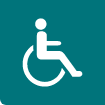We use cookies to improve your experience. By accepting you agree to our cookie policy

You may have heard that it’s a good idea to keep your own personal health folder with all your medical records. But how do you make one, and where do you start?
No matter your personal health situation, we advise everyone to keep a personal health folder with all the relevant information.
Your folder can be a physical folder of printed documents, an online folder, or a mixture of both. There is no right or wrong way to store your information.
The most important thing is that you stay on top of the information, know how to access it, and use it when necessary to show your doctor or specialist or identify patterns in how you respond to treatment.
In the UK, the NHS launched a service for individuals to access and add to their personal health record services through the NHS app. This may not be available for all users yet.
A personal health folder is a repository of information relating to your health records. Because health conditions like CRPS can be complex, it is important to maintain good record keeping.
This allows you to effectively monitor how your health is being treated and can also help your GP and can also help those involved in your healthcare to make more informed decisions.
Getting a medical diagnosis (or seeking a diagnosis) for a chronic condition like Complex Regional Pain Syndrome can be a difficult journey, with lots of different appointments, scans, and consultations involved.
As time passes, it can be difficult to remember what appointment you attended, and which specialist you saw.
If you are able to maintain good records, you can have the peace of mind of being able to advocate for yourself by presenting the relevant information.
Before deciding whether to use a physical, online, or hybrid folder, it is a good idea to identify where your information is currently stored.
You may wish to tell your primary care provider or GP that you are keeping a personal health folder so that they can assist in helping you access your information. Depending on where you live, there may be a formal process for this.
We recommend always keeping a copy of any letters you receive for appointments. At some appointments such as hospital appointments or those with specialists, you are entitled to request that a copy of any letters are also sent to you for your records.
If you do have a physical folder only, we advise investing in a good folder with separate tabs or dividers and creating a system that makes sense to you.
For example, you could have a section for GP appointments, hospital appointments, scans, treatments, or information about medication that you take.
Depending on your circumstances, you may have a preference for how you want to store your medical information.
Consider the following when choosing a way to store your information:
Security and ease of access are two of the most important points when it comes to creating a personal health folder.
You or your family members may need to access the information at short notice, so it is worth considering online storage, with secure passwords shared among the appropriate caregivers.
One question that families often ask is what information should be included in a person’s health folder?
Some of the following information should be included in your personal health folder:

If an online option is not the best choice for you, a physical folder can be used to keep your information in one convenient location.
It is usually inexpensive to buy a paper or plastic document folder and easy to file the information into the relevant tabs/ sections.
It is also easy for a caregiver or family member involved in your care to quickly access the information and identify the relevant points when making a decision on your care.
Be aware that it can be easy to lose or damage these folders and be sure to store them somewhere that they won’t be accessible to a third party.
Keeping a hybrid personal health folder can be an appropriate option for some individuals. A simple way to do this effectively is to keep a folder for records like letters, copies of test results, and your own handwritten notes.
To supplement this, you can scan these physical documents and upload them to a basic online system.
This could be as simple as a folder on your computer, or an online cloud drive. Be sure to keep a note of your password (not beside your computer) in case you forget.
Backing up your documents in this way means that you or your family members/ next of kin or caregivers can also access the information if necessary.
Be careful when uploading files to do so in an ordered or logical way that makes sense to you. It will save you time in the long run if your records are neatly labelled and easy to access.
If you want to take the hassle out of maintaining a personal health folder entirely, you can opt for a website/ software that does all the work for you. Some health record systems are free, while others require payment.
Depending on where you live, you can look for appropriate online options that will meet your needs.
The advantage of using online programmes include:
While it can be useful to take the hassle out of the process, it can be time-consuming and be less personal to your exact situation than other forms of health record systems.
At Burning Nights CRPS, we understand how overwhelming it may seem to stay on top of your treatments and the care you receive.
If you haven’t yet joined our monthly virtual support groups, or used our befriending service, we’re always looking for more people to get involved.
We are always on hand to assist with your queries and provide you with information or point you in the right direction.
Did you find this article helpful? Let us know in the comments or share this article on your social media platform.
We use cookies to improve your experience. By accepting you agree to our cookie policy
 £
£